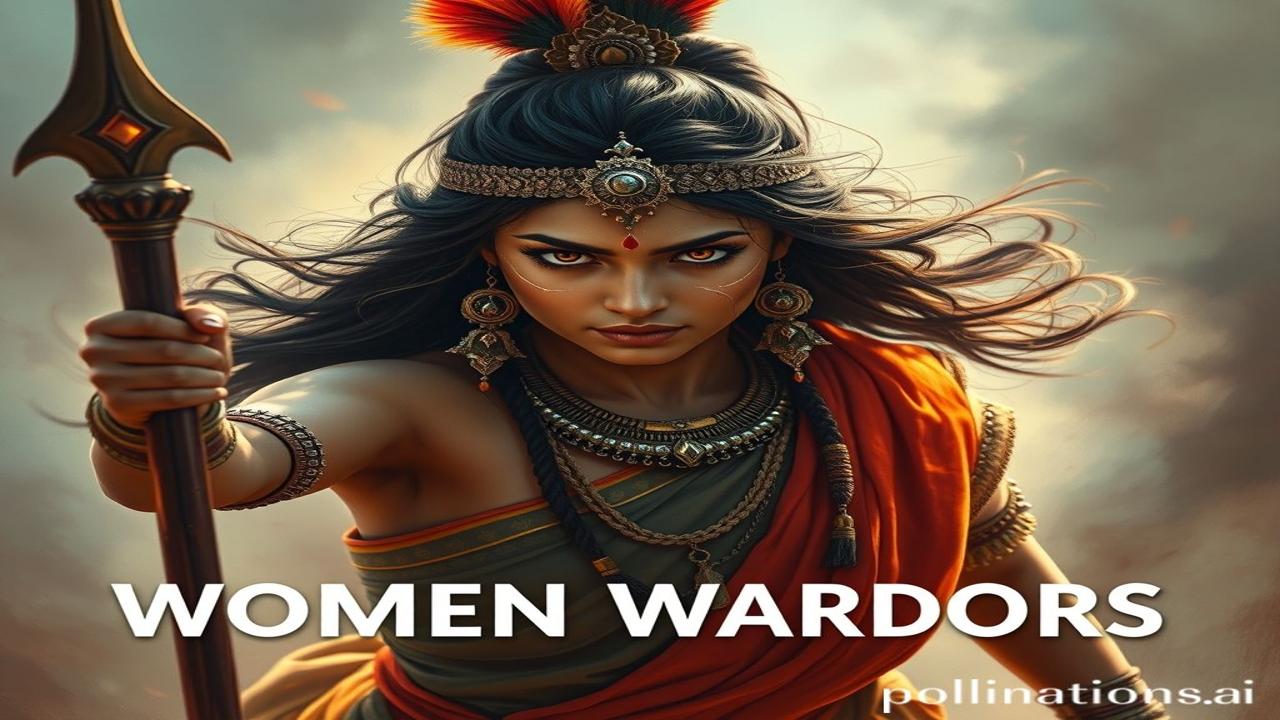Gaon ki Raniyan: Unveiling the Power of Women-Led Village Governance Systems in India
Kabhi kabhi, jab main apni dadi maa ki kahaniyan sunti thi, toh lagta tha jaise main ek alag hi duniya mein pahunch gayi hoon. Ek aisi duniya jahan auraton ne sirf ghar nahi, poore gaon ko sambhala. Yeh kahaniyan meri dhool-bhari yaadon mein basi hain, aur aaj main unhi yaadon se ek aisi sachchai nikal kar laayi hoon jiska zikr shayad kam hi hota hai – Bharat mein mahilaon dwara chalaayi ja rahi gramin shasan pranaliyan.
Itihaas Ki Parchhaiyan: Women Leading From The Front
What exactly are we talking about? Women-led village governance systems! These aren’t just about women attending panchayat meetings. They are about women taking charge, making decisions, and leading their villages towards progress and prosperity. Think of it as “Swaraj” in its truest sense, but led by the very women who nurture the land and families.
This phenomenon isn’t new. Although often overlooked, it has historical roots stretching back to pre-colonial India. While documented evidence might be scarce for some periods, folklore and community narratives across different regions speak volumes. Remember, history isn’t always found in textbooks; sometimes, it lives in the songs and stories passed down through generations.
Key Moments & Movers (though names might be lost to time):
- Pre-Colonial Echoes: Small communities, often tribal or rural, relied on female wisdom for resource management, conflict resolution, and community well-being.
- Post-Independence Shift: The push for decentralized governance after independence created opportunities for women to participate in formal political structures like Panchayati Raj Institutions (PRIs).
- The 73rd Amendment (1992): This landmark legislation mandated reservation for women in PRIs, giving them a legal foothold in local governance.
Why is this important? Because it challenges the conventional narrative of Indian history, which often marginalizes women’s contributions. It shows that women have always been agents of change, even when their voices weren’t amplified. It proves that when women are given the opportunity, they can transform their communities for the better.
Gaon Ki Galiyon Mein: A Day in the Life
Imagine a small village nestled in the hills of Uttarakhand. The sun rises, casting a golden glow on the terraced fields. Ma Ganga, the head of the village panchayat, wakes up early. Not to chores only, but to a whole village responsibility.
“Ram-Ram sabko!” she greets her neighbours, a warmth that fills the air.
First, she checks on the community water source. Water scarcity is a big problem here, and she’s been working on a new rainwater harvesting project. She remembers the skepticism she faced initially.
“Aurat kya jaane paani ka bandobast karna? (What does a woman know about managing water?)” some men had scoffed.
But Ganga, undeterred, gathered the women of the village. Together, they identified the problems, devised solutions, and implemented the project. Now, the village has enough water for irrigation and household use.
Later, she attends a panchayat meeting. The agenda includes resolving a land dispute, approving funds for the local school, and discussing ways to improve sanitation. Rani, a young woman from a marginalized community, speaks up about the discrimination she faces. Ma Ganga listens patiently and promises to address the issue.
As the day ends, Ganga reflects on her work. It’s not easy, but it’s rewarding. She knows that her actions are making a difference in the lives of her villagers. She is fulfilling her duties, ensuring her people are happy.
Aaj ki Bharat Mein: Aasha ki Kiran
Today, the spirit of women-led governance continues to thrive in many parts of India. While challenges remain, the impact of women in leadership is undeniable.
Examples of cultural significance:
- Local Festivals: Women’s groups often play a vital role in organizing and managing local festivals, preserving traditions and promoting community harmony.
- Self-Help Groups (SHGs): These groups empower women economically, allowing them to access credit, start businesses, and gain financial independence. This economic empowerment translates into greater social and political influence.
- Grassroots Movements: Women are at the forefront of many grassroots movements fighting for environmental protection, social justice, and land rights.
The “Beti Bachao, Beti Padhao” campaign, for instance, reflects a growing awareness of the importance of empowering girls and women. But true “Bharatiyata” lies in not just educating girls but also empowering them to lead, to make decisions, and to shape their own destinies.
Aisa Bhi Hota Hai!: Mind Blowing Facts
Myth: Women are too emotional to be effective leaders.
Truth: Studies have shown that women leaders often display higher levels of empathy and collaboration, which can lead to more inclusive and effective decision-making. In short, that emotion can make them great leaders.
Fun Fact: Some villages in Maharashtra have all-women panchayats, demonstrating the potential for women to completely dominate local governance.
Aankhon Dekhi: Feel the Atmosphere
Imagine walking through a village where women lead. The air is filled with a sense of empowerment. The temple bells chime, a daily morning ritual. The aroma of freshly baked bread wafts from the communal kitchen, managed by women’s self-help groups. The walls of the school are painted with colorful murals depicting women farmers and artisans. The sounds of children laughing and playing fill the air. The whole place feels like a space where safety and joy reside. It’s a place where hope blossoms.
Aakhri Baat: Anmol Vichar
As the Bhagavad Gita says, “कर्मण्येवाधिकारस्ते मा फलेषु कदाचन।” (karmanye vadhikaraste ma phaleshu kadachana) – You have the right to perform your prescribed duty, but you are not entitled to the fruits of action.
Women-led village governance systems are not just about achieving development goals; they are about fulfilling one’s duty to society. They are about creating a more just and equitable world. They are about unleashing the Shakti within every woman to build a better future for all. Let’s remember their stories, support their efforts, and build a future where every village has its own Gaon ki Raniyan, leading the way towards a brighter tomorrow.
